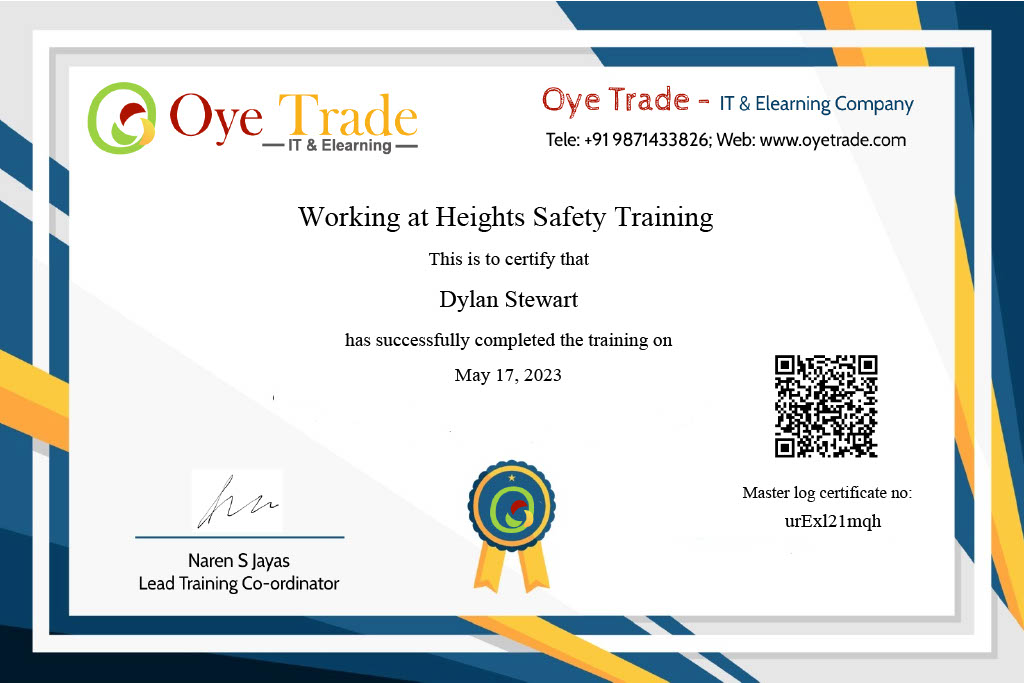Welcome to our online training course dedicated to preventing work-related musculoskeletal disorders (MSDs), which are a common concern across various industries worldwide. In this comprehensive guide, we'll provide you with the knowledge and skills necessary to identify, assess, and control the risks associated with work-related MSDs. We'll focus on key topics such as work-related upper limb disorders (WRULDs), manual handling, hazards and controls for load-handling aids and equipment, requirements for lifting operations, and periodic inspection and examination/testing of lifting equipment.
$20 *Payable for digital course completion certificate



Work-related musculoskeletal disorders pose significant risks to workers' health, productivity, and quality of life. However, by implementing the strategies outlined in this training course, individuals and organizations can effectively mitigate these risks and create safer, healthier workplaces for everyone. Whether you're an employee looking to protect yourself from injury or a manager seeking to improve workplace safety practices, this guide will provide you with the knowledge and tools needed to succeed. Enroll now to empower yourself and your colleagues with the skills necessary to prevent work-related musculoskeletal disorders and promote overall well-being in the workplace.
Upon successful completion of the course, candidates will receive a course completion certificate.
By completing this training course, you'll be equipped with the knowledge and skills necessary to protect yourself and others from the risks of work-related musculoskeletal disorders. Whether you're an employee, supervisor, or safety professional, this guide will empower you to create safer work environments, reduce injuries, and enhance overall well-being. Enroll now to take the first step towards a healthier, safer workplace for everyone.
Section 1: Understanding Work-Related Upper Limb Disorders (WRULDs)
This section delves into the nature and causes of WRULDs, including conditions like carpal tunnel syndrome, tendonitis, and repetitive strain injuries. Learn to recognize early signs and symptoms of WRULDs, understand ergonomic factors contributing to their development, and explore effective strategies for prevention and management.
Section 2: Mastering Manual Handling Techniques Learn practical guidance on safe lifting, carrying, pushing, and pulling techniques. Understand the importance of proper posture, team lifting, and the use of mechanical aids to reduce strain on your body.
Section 3: Hazards and Controls for Load-Handling Aids and Equipment Examine common hazards associated with load-handling aids and equipment such as forklifts, cranes, and hoists. Gain insights into risk assessment, safe operating procedures, maintenance requirements, and the importance of operator training.
Section 4: Requirements for Lifting Operations
Explore legal requirements and regulations governing lifting operations to ensure worker and public safety. Learn about risk assessment, lifting plans, competent persons, and the role of regulatory bodies in enforcing compliance.
Section 5: Periodic Inspection and Examination/Testing of Lifting Equipment
Understand the importance of regular inspection, examination, and testing of lifting equipment to identify potential defects or wear and tear. Learn about legal obligations, frequency of inspections, documentation requirements, and the role of competent inspectors.
This course offers essential knowledge and skills to prevent work-related musculoskeletal disorders (MSDs) and foster a safer, healthier work environment. Here's why you should join:

Download the course syllabus and study guide.
Download Now
Upon completing the course, participants will possess the knowledge, skills, and tools to prevent work-related musculoskeletal disorders, create safer workspaces, and promote health and well-being. Key outcomes include:

For any query please reach us at:
Email - naren@oyetrade.com
Call - +91 9871 433 826